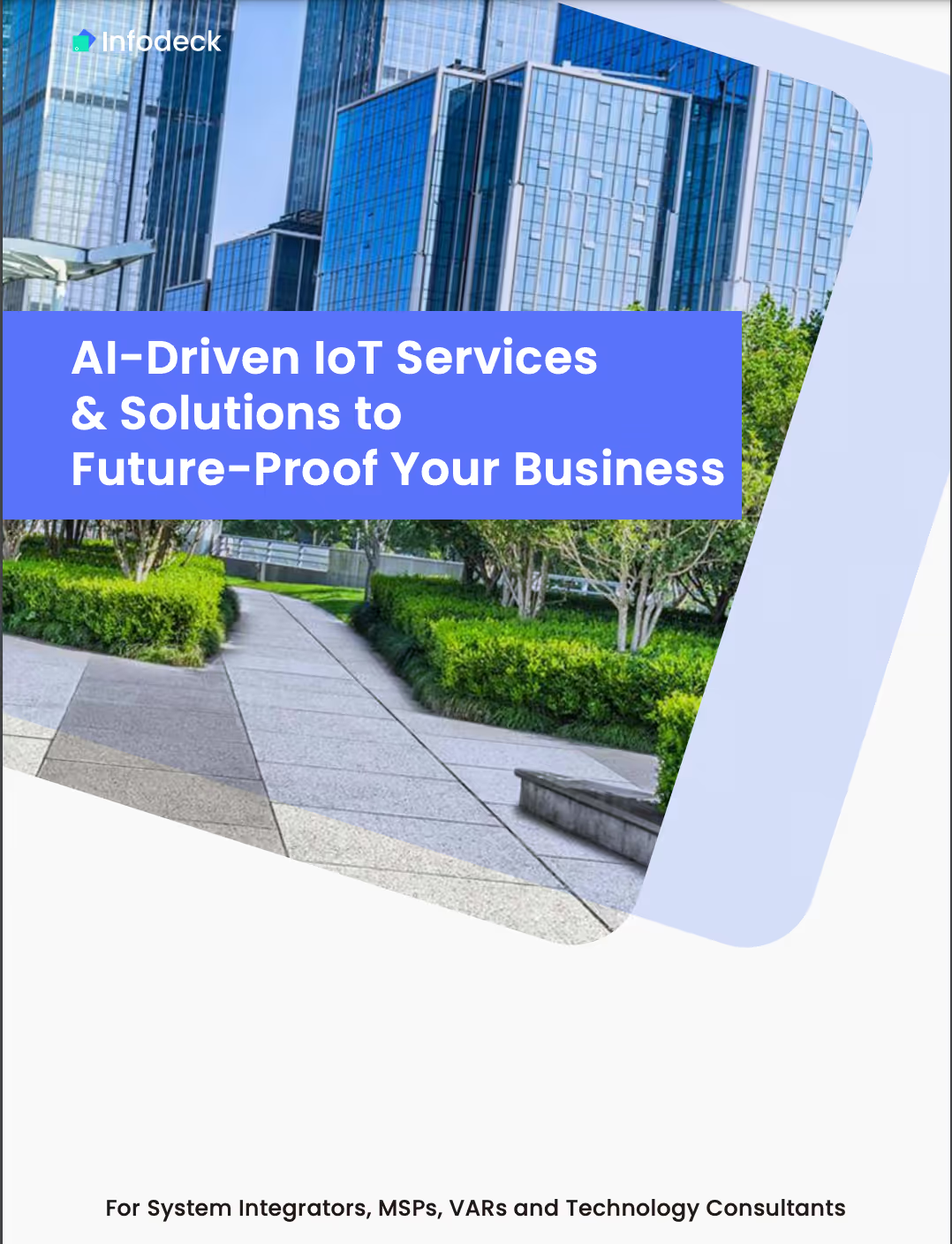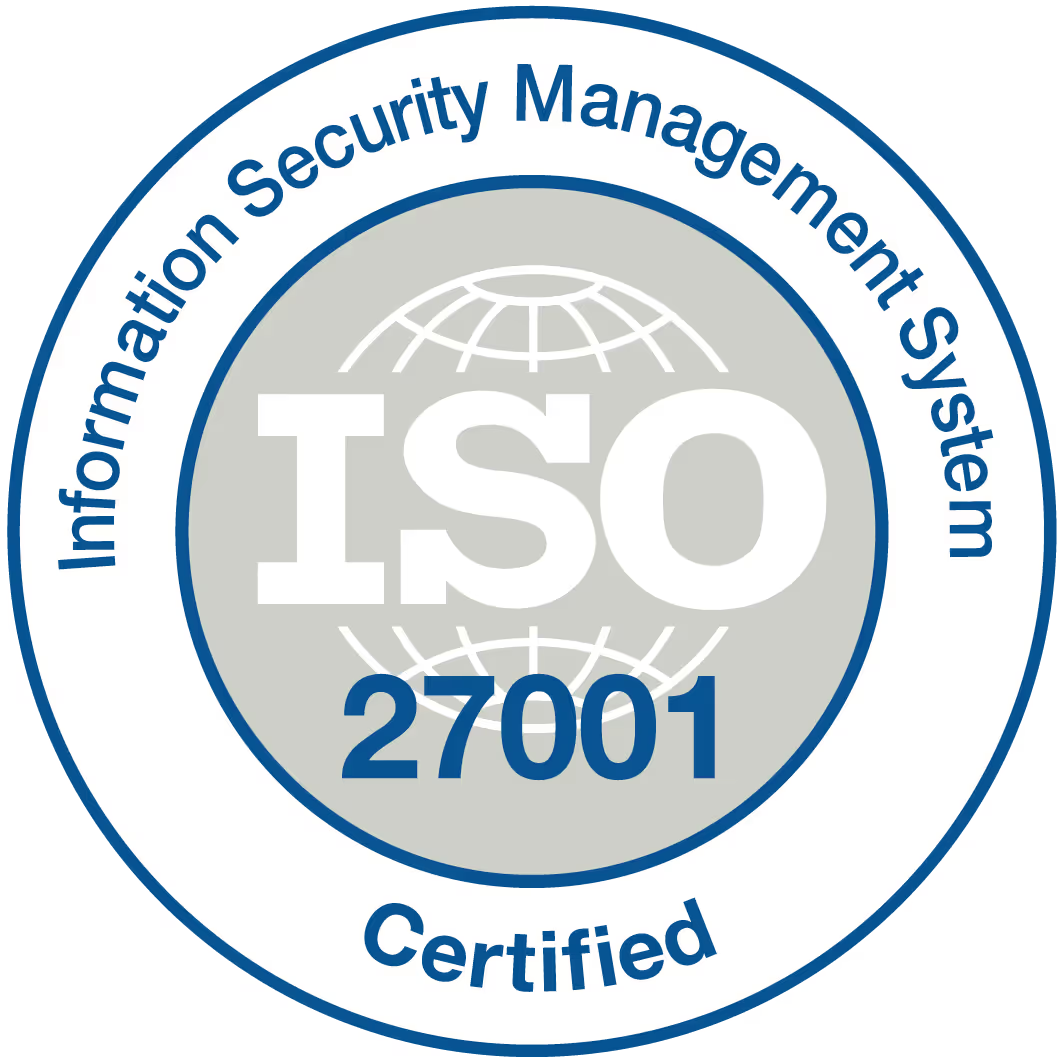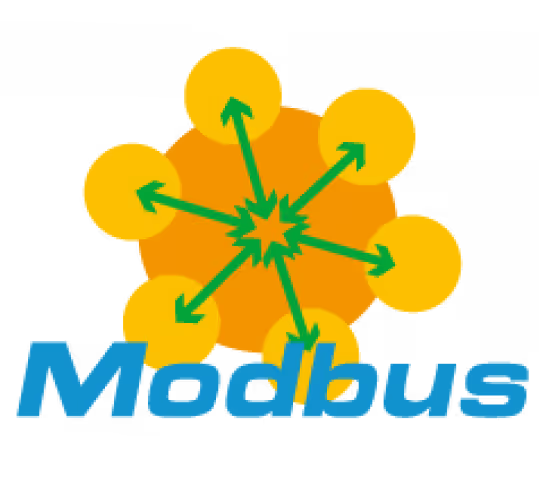
IoT Smart Buildings: Solutions for a Smarter Future
Imagine walking into a smart building that knows your preferences before you even step foot inside, whether it's in the context of smart homes, smart workplaces, or the larger concept of smart worlds. This is made possible through the integration of buildings IoT technology. Smart homes and smart building applications have revolutionised building automation. The lights, temperature, and blinds automatically adjust to your preferred settings, eliminating the need for human intervention. This is the power of IoT smart buildings, where connectivity technologies seamlessly integrate with our surroundings to enhance efficiency, sustainability, occupant comfort, and interaction. Assistive technologies play a crucial role in making homes smarter and more accessible.
IoT smart buildings are revolutionising workplaces, factories, and warehouses by incorporating assistive technologies. By leveraging connected devices and sensors, these smart buildings optimise operations and transform traditional infrastructure. With the rise of smart building IoT trends, these intelligent structures are at the forefront of smart building applications in both homes and buildings IoT. From communication systems that enhance connectivity in workplaces to energy management systems that reduce consumption and lower costs, IoT smart buildings are revolutionising the way we live and work. With predictive maintenance that prevents equipment breakdowns, these smart buildings are transforming the home and workplace experience. With smart homes and smart workplaces, communication in commercial IoT buildings is enhanced, providing a seamless experience for occupants while maximising resource utilisation.
Definition and Details of Smart Buildings
Smart buildings are revolutionising the way we communicate and interact with our commercial IoT and home environments. These smart workplaces harness advanced technologies, such as the Internet of Things (IoT), to create efficient and intelligent spaces for communication. The building equipment is integrated with a building monitor to ensure optimal functionality. By leveraging automation, connectivity, and data analytics, smart buildings enhance performance, optimise energy consumption, and improve occupant comfort.
Utilising Advanced Technologies for Efficient Management
At their core, smart buildings are all about efficiency. They employ a wide range of IoT devices and applications to streamline operations and maximise resource utilisation. From lighting to HVAC systems, security to occupancy monitoring, these buildings integrate various components into a cohesive ecosystem that works together seamlessly.
One key aspect of smart buildings is the use of advanced IoT sensors. These sensors collect real-time data on various parameters in smart buildings IoT trends, such as temperature, humidity, occupancy levels, and energy usage in buildings IoT. This data is then analysed to provide insights into building performance and enable informed decision-making.
Automation for Optimal Performance
Automation plays a crucial role in smart buildings by automating routine tasks and optimising processes. For example, smart lighting systems can adjust brightness levels based on natural light availability or occupancy in a room. This not only reduces energy consumption in smart buildings but also enhances user experience by providing optimal lighting conditions, following the latest IoT trends.
Similarly, smart building IoT technology can automate heating, ventilation, and air conditioning (HVAC) systems to maintain comfortable temperatures while minimising energy waste. Smart thermostats can learn occupants' preferences over time and adjust settings accordingly.
Connectivity for Seamless Integration
Connectivity forms the backbone of smart building infrastructure. By connecting various devices through networks like Wi-Fi or Bluetooth Low Energy (BLE), these buildings enable seamless integration between different systems. This connectivity allows centralised control and monitoring of smart building IoT from a single interface or even remotely through cloud-based platforms.
The integration of cloud computing further enhances the capabilities of smart buildings. It enables remote access to building functions from anywhere in the world using connected devices like smartphones or tablets. Building managers can monitor energy consumption, adjust settings, and receive real-time alerts or notifications about any anomalies.
Influence of IoT on Smart Buildings
The Internet of Things (IoT) has revolutionised the way traditional buildings operate, transforming them into smart buildings with enhanced functionality and efficiency. With seamless connectivity between devices within a smart building ecosystem, IoT plays a pivotal role in optimising various aspects of building management.
Real-time data collection for intelligent decision-making
One of the significant contributions of IoT to smart buildings is its ability to enable real-time data collection. Through smart building IoT sensors and connected devices, information about occupancy, temperature, lighting levels, energy usage, and more can be gathered continuously. This wealth of data empowers building managers to make informed decisions promptly. For example, by analysing occupancy patterns in different areas of a building, managers can optimise space utilisation and adjust heating or cooling accordingly.
Enhanced energy efficiency and reduced operational costs
IoT implementation in smart buildings brings forth substantial benefits in terms of energy efficiency. By leveraging real-time data collected from IoT sensors throughout the building, energy consumption can be closely monitored and controlled using Smart FM technology for Smart Buildings. Smart thermostats can automatically adjust temperature settings based on occupancy patterns or external weather conditions. Lighting systems equipped with motion sensors can turn off lights in unoccupied areas, further reducing energy waste.
Moreover, IoT enables predictive analytics that help identify potential issues before they escalate into costly problems. For instance, by monitoring equipment performance through connected sensors, maintenance teams can detect early signs of malfunctioning or inefficiencies. This proactive approach allows for timely repairs or replacements to prevent major breakdowns and minimise downtime.
Improved occupant experience and comfort
Smart buildings powered by IoT prioritise occupant experience by creating personalised environments tailored to individual preferences. Occupants can have control over their workspace environment through mobile apps that allow them to adjust lighting levels, temperature settings, or even reserve meeting rooms effortlessly.
IoT-enabled buildings offer advanced security features such as facial recognition access control systems and video surveillance cameras linked to cloud-based platforms for real-time monitoring. These measures enhance safety and provide peace of mind to occupants.
Facility Management in IoT Smart Buildings
Facility management in IoT smart buildings is all about making our lives easier and more efficient. With the advancement of technology, we can now monitor and control various aspects of building management, such as energy consumption and security systems, from a centralised platform. This integration of Internet of Things (IoT) technology into facility management has revolutionised the way we manage our buildings.
10 Ideas for Facility Management in IoT Smart Buildings
- Integration of IoT Devices: The FM sector can evolve by integrating IoT devices into their operations. This can include using sensors to monitor equipment performance, occupancy levels, and energy consumption in real-time.
- Predictive Maintenance: Implementing IoT devices to collect data on equipment performance can help FM professionals detect potential issues before they become major problems. This can minimise downtime and maintenance costs.
- Energy Management: Utilise IoT sensors to monitor energy consumption in smart buildings. By analysing real-time data, FM professionals can optimise energy usage, reduce costs, and minimise environmental impact.
- Space Optimisation: IoT sensors can be used to track occupancy levels in different areas of smart buildings. This data can help FM professionals optimise space utilisation, making the most efficient use of available resources.
- Enhanced Security Systems: Integrating IoT security systems, such as surveillance cameras and access control, can enhance building security. Real-time monitoring and alerts can help FM professionals ensure the safety of occupants and respond quickly to security breaches.
- Indoor Air Quality Monitoring: Install IoT sensors to measure air quality parameters in smart buildings. This data can help FM professionals maintain a healthy and comfortable environment for occupants by adjusting ventilation and HVAC systems accordingly.
- Waste Management Optimisation: Implement IoT sensors in waste bins to monitor fill levels and optimise waste collection schedules. This can improve waste management efficiency and reduce costs.
- Smart Lighting Solutions: Use IoT-enabled lighting systems to automatically adjust lighting levels based on occupancy and natural light. This can optimise energy usage and create a more comfortable and productive environment for occupants.
- Emergency Response Systems: Integrate IoT devices with emergency response systems to enable real-time monitoring and quick response in case of emergencies. This can include fire detection systems, alarms, and emergency evacuation plans.
- Data Analytics and Reporting: Utilise IoT platforms to collect and analyse data on various facility management aspects. This can generate actionable insights and reports to improve decision-making and overall building performance.
Automation Streamlines Facility Management Tasks
One of the key benefits of IoT smart buildings is automation. By connecting different devices and systems to a central platform, facility managers can streamline their tasks and reduce manual intervention. For example, instead of manually adjusting the temperature in each room, an automated system can regulate it based on occupancy or time schedules. This not only saves time but also ensures optimal energy usage.
Real-time Data Analysis for Proactive Issue Identification
With IoT-enabled sensors placed throughout the building, facility managers have access to real-time data that helps them identify potential issues before they escalate into major problems. For instance, if there's a sudden increase in energy consumption in a particular area, it could indicate a malfunctioning equipment or a leak. By analysing this data in real-time, facility managers can take immediate action to resolve the issue before it affects other parts of the building.
Remote Access for Monitoring Operations Anywhere
Another advantage offered by IoT smart buildings is remote access. Facility managers can now monitor operations even when they are off-site or during emergencies. Through their smartphones or tablets, they can check security camera feeds, adjust settings remotely, or receive notifications about any unusual activities within the building. This level of remote access provides convenience and peace of mind for facility managers who need to stay connected at all times.
Integration with AI-powered Algorithms Enhances Decision-making
The integration of AI-powered algorithms takes facility management in IoT smart buildings to another level. These algorithms analyse data collected from various sensors and devices to provide valuable insights and recommendations.
Top Trends in IoT for Smart Building Management
edge computing: Faster Response Times and Reduced Latency
Edge computing is revolutionising smart building management by bringing processing power closer to the source of data generation. This means that instead of sending all the data to a centralised cloud server, it can be processed locally at the edge devices themselves. The result? Faster response times and reduced latency.
With edge computing, smart buildings can analyse data in real-time, enabling immediate actions and adjustments. For example, if a sensor detects an increase in temperature, the HVAC system can automatically adjust to maintain optimal comfort levels without any delay. This not only enhances user experience but also improves energy efficiency by eliminating unnecessary energy consumption.
Artificial Intelligence: Optimised Energy Consumption and Predictive Maintenance
Artificial Intelligence (AI) algorithms play a crucial role in optimising energy consumption and predicting maintenance needs in smart buildings. These algorithms analyse vast amounts of data collected from IoT devices throughout the building to identify patterns, trends, and anomalies.
By leveraging AI, facility managers can gain valuable insights into energy usage patterns and make informed decisions about optimising consumption. For instance, AI can identify areas where energy is being wasted or suggest adjustments to lighting or HVAC systems for improved efficiency.
Moreover, AI-powered predictive maintenance enables proactive identification of potential equipment failures before they occur. By continuously monitoring sensors and analysing historical data, AI algorithms can detect early signs of malfunction or degradation in building systems such as elevators or security systems. This allows for timely maintenance interventions, reducing downtime and minimising costs.
5G Connectivity: Seamless Integration of IoT Devices
The deployment of 5G networks is revolutionising connectivity within smart buildings. With its high speed, low latency, and massive device capacity capabilities, 5G enables seamless integration of numerous IoT devices throughout a building's infrastructure.
This means that everything from lighting systems to security cameras to environmental sensors can communicate with each other efficiently without experiencing bottlenecks or connectivity issues.
Applications of IoT in Smart Building Management
The integration of Internet of Things (IoT) technology has revolutionised the way we manage and optimise smart buildings. With the ability to connect and communicate, IoT devices have opened up a world of possibilities for enhancing energy efficiency, improving security measures, optimising space utilisation, monitoring environmental conditions, and implementing predictive maintenance solutions. Let's explore the various applications of IoT in smart building management.
Energy Management Systems
Energy consumption is a significant concern for commercial buildings. Traditional methods of managing lighting, heating, ventilation, and air conditioning (HVAC) systems often result in unnecessary energy wastage. However, with the implementation of IoT sensors and automation systems, energy management has become more efficient than ever before.
With IoT-enabled energy management systems, sensors can monitor occupancy levels within different areas of a building. This data allows for precise control over lighting and HVAC systems based on real-time demand. For example, when a room is unoccupied or only partially occupied, lights can be automatically dimmed or turned off completely as part of our Super Low Energy Programme to save electricity.
Furthermore, temperature settings can be adjusted according to occupancy patterns and external weather conditions. By leveraging IoT technology in this manner, smart buildings can significantly reduce their energy consumption while maintaining optimal comfort levels for occupants.
Smart Security Systems
Security is paramount. Traditional security measures such as surveillance cameras and access controls are now being enhanced through the integration of IoT devices. These devices provide real-time monitoring capabilities that enable quicker response times to potential threats or breaches.
Surveillance cameras equipped with IoT sensors can detect unusual activities or unauthorised access attempts within a building premises. They can also transmit live video feeds directly to security personnel via mobile devices or centralised monitoring systems.
Access controls integrated with IoT technology offer advanced authentication methods such as biometric recognition or proximity cards/fobs. These measures ensure that only authorised individuals gain entry into restricted areas while minimising the risk of unauthorised access.
Examples of IoT Utilisation in Smart Buildings
In the world of smart buildings, the Internet of Things (IoT) is revolutionising the way we interact with our environments. From residential homes to commercial spaces, IoT technology is being harnessed to optimise energy usage, enhance security measures, and improve overall efficiency. Let's explore some examples of how IoT is being utilised in smart buildings.
Smart Thermostats for Energy Optimisation
One significant application of IoT in smart buildings is the use of smart thermostats. These innovative devices are designed to adjust temperature settings based on occupancy patterns, ensuring optimal energy usage without compromising comfort. By leveraging sensors and data analytics, smart thermostats can learn from user behaviour and automatically adjust heating or cooling settings accordingly. This not only reduces energy consumption but also leads to substantial cost savings for residential buildings.
Motion Sensor Lighting Systems for Electricity Conservation
Another remarkable example of IoT utilisation in smart buildings is motion sensor lighting systems. These systems are equipped with sensors that detect movement within a space and automatically turn off lights when no one is present. By implementing the Super Low Energy Programme, these systems eliminate the need for manual light switches or relying on occupants to remember turning off lights. As a result, electricity consumption is significantly reduced in commercial spaces such as offices and retail stores.
Integrated Access Control Systems for Enhanced Security
IoT-enabled access control systems have transformed building security by integrating advanced technologies into key cards and biometric authentication methods. With these systems, individuals can securely enter smart office buildings using their personalised key cards or biometric identifiers such as fingerprints or facial recognition. The integration of IoT technology enhances both convenience and security by providing real-time access control monitoring and allowing authorised personnel easy entry while keeping unauthorised individuals out.
Real-Time Occupancy Tracking for Efficient Resource Allocation
Within co-working spaces and shared office environments, real-time occupancy tracking using IoT technology has become invaluable. Facility managers can utilise IoT Smart FM for Smart Buildings by using connected sensors strategically placed throughout the building to track occupancy levels in various areas.
Enhancing Energy Efficiency in Smart Buildings
In the realm of smart buildings, enhancing energy efficiency is a top priority. By leveraging IoT technologies and applications, building owners and occupants have the opportunity to optimise energy consumption and reduce waste. Let's explore some key ways in which energy efficiency can be enhanced in smart buildings.
Real-Time Energy Monitoring for Targeted Optimisation
Real-time energy monitoring plays a crucial role in identifying high-consumption areas within smart buildings. By collecting data on electricity usage, building operators can pinpoint specific areas that require optimization measures. This targeted approach allows for efficient allocation of resources and reduces unnecessary energy expenditure.
Pros:
- Enables identification of high-consumption areas
- Facilitates targeted optimisation measures
Cons:
- Requires initial investment in IoT sensors and monitoring systems
Automated Lighting Controls for Energy Savings
One significant contributor to energy waste in buildings is inefficient lighting practices. However, with automated lighting controls powered by IoT technology, this issue can be mitigated. These systems adjust brightness levels based on natural light availability and occupancy patterns, ensuring that lights are only used when necessary. This not only reduces energy consumption but also extends the lifespan of lighting fixtures.
Pros:
- Reduces energy waste from lighting
- Optimises brightness levels based on occupancy patterns
Cons:
- Initial installation costs may be higher compared to traditional lighting systems
IoT-Enabled HVAC Systems for Optimal Temperature Regulation
Heating, ventilation, and air conditioning (HVAC) systems are major consumers of energy in commercial buildings. With IoT-enabled HVAC systems, temperature settings can be optimised based on occupancy patterns and external weather conditions. By adjusting heating or cooling according to real-time data insights, these systems minimise unnecessary energy usage while maintaining occupant comfort.
Improving Occupant Comfort in Smart Buildings
Smart buildings are revolutionising the way we experience our indoor spaces. With the integration of IoT technology, these buildings are becoming more intelligent, efficient, and comfortable for occupants.
Personalised Climate Control Systems
Gone are the days of battling over the thermostat in shared office spaces or dealing with uncomfortable temperatures in public areas. Smart buildings now offer personalised climate control systems that allow occupants to adjust temperature and airflow according to their individual preferences. Whether it's a hot summer day or a chilly winter morning, occupants can easily set their desired temperature using intuitive interfaces on their smartphones or dedicated control panels.
Pros:
- Occupants have control over their immediate environment.
- Increased comfort leads to higher productivity and satisfaction.
Cons:
- Potential energy wastage if occupants set extreme temperatures.
- Initial setup costs may be higher compared to traditional HVAC systems.
Indoor Air Quality Sensors
Indoor air quality plays a vital role in occupant health and well-being. Smart buildings tackle this issue by incorporating indoor air quality sensors that continuously monitor pollutant levels such as carbon dioxide (CO2), volatile organic compounds (VOCs), and particulate matter. When pollutant levels exceed predefined thresholds, ventilation systems automatically kick into action, ensuring fresh air is circulated throughout the building.
- Pros:
- Improved indoor air quality promotes occupant health and productivity.
- Energy-efficient ventilation reduces energy consumption.
- Cons:
- Regular maintenance of sensors is required for accurate readings.
- Initial installation costs may be higher compared to conventional systems.
Voice-Controlled Assistants
Imagine controlling various building functions without lifting a finger! Integrated voice-controlled assistants like Amazon Alexa or Google Assistant are making this a reality in smart buildings.
The Future of IoT Smart Buildings
The future of IoT smart buildings is an exciting one, as it envisions a fully interconnected ecosystem where devices and systems seamlessly integrate with each other. This integration will revolutionise the way buildings operate and enhance their overall efficiency, comfort, and sustainability.
Artificial Intelligence (AI) Algorithms for Optimisation
One key aspect of the future of IoT smart buildings is the utilisation of Artificial Intelligence (AI) algorithms. These algorithms will play a crucial role in optimising building operations through predictive analytics and automation. By analysing vast amounts of data collected from various sensors and devices, AI algorithms can identify patterns, make informed predictions, and take proactive measures to improve energy efficiency, reduce maintenance costs, and enhance occupant comfort.
Imagine walking into your office building on a hot summer day. With AI-powered HVAC systems in place, the building would automatically adjust the temperature based on real-time data from weather forecasts and occupancy patterns. This proactive approach ensures that you are greeted with a comfortable environment while minimising energy wastage.
Evolution of Edge Computing
Another significant development in the future of IoT smart buildings is the evolution of edge computing. Edge computing refers to processing data at or near the network edge rather than relying solely on cloud-based servers. This approach enables faster decision-making by reducing latency and ensuring real-time responsiveness.
In smart buildings, edge computing allows for immediate analysis of sensor data within the building itself. For example, if there's a sudden spike in power consumption detected by smart meters or anomalies identified by security cameras, edge computing can quickly process this information and trigger appropriate actions like adjusting lighting levels or notifying security personnel.
5G Networks Enabling Connectivity
The advent of 5G networks will further facilitate the proliferation of connected devices within smart buildings. With its higher bandwidth capabilities and lower latency rates compared to previous generations of cellular networks, 5G will support the increasing demands for data-intensive applications in smart buildings.
IoT Enablement for Indoor Air Quality Improvement

IoT technology has revolutionised the way we interact with our surroundings, and one area where it is making a significant impact is in smart buildings. With the help of IoT sensors, indoor air quality within these buildings can be measured and monitored in real-time, leading to healthier environments for occupants. Let's explore how IoT enablement is improving indoor air quality in smart buildings.
Real-Time Insights with IoT Sensors
IoT sensors play a crucial role in measuring various pollutants such as CO2 levels, VOCs (volatile organic compounds), humidity, and more. These sensors are strategically placed throughout smart buildings to collect data on the quality of the air. By continuously monitoring these parameters, they provide real-time insights into the indoor air quality.
Automated Ventilation Systems for Optimal Airflow
One of the key advantages of IoT enablement in smart buildings is the ability to adjust ventilation systems based on sensor readings. Automated ventilation systems utilize the data collected by IoT sensors to determine optimal airflow rates. This ensures that fresh air is constantly circulating within the building while maintaining optimal indoor air quality levels.
Proactive Measures with AI Algorithms
The integration of AI algorithms takes indoor air quality improvement to a whole new level. By analysing historical sensor data and patterns, AI algorithms can predict future air quality patterns within smart buildings. This enables proactive measures to be taken before any potential issues arise.
For example:
- If an increase in CO2 levels is detected during certain times of day or specific events, such as meetings or gatherings, AI algorithms can anticipate this pattern and adjust ventilation accordingly.
- Similarly, if high VOC levels are consistently detected in a particular area of the building, AI algorithms can suggest alternative cleaning methods or identify potential sources of pollution.
Real-Time Alerts and Notifications
In addition to continuous monitoring and analysis, IoT-enabled systems also provide real-time alerts and notifications regarding potential air quality issues.
Improving Occupant Comfort and Quality of Life in Smart Buildings
Smart buildings, equipped with IoT technology, are revolutionising the way we live and work. These intelligent structures leverage connectivity and automation to enhance occupant comfort and improve the overall quality of life. Let's explore some key ways in which IoT is transforming smart buildings.

IoT-enabled occupancy sensors adjust lighting, temperature, and other environmental factors based on individual preferences within smart buildings.
Gone are the days of one-size-fits-all settings in buildings. With IoT-enabled occupancy sensors, smart homes, workplaces, and other built environments can now customise their lighting, temperature, and other environmental factors according to individual preferences. These sensors detect the presence or absence of occupants in a room or area and adjust the settings accordingly. This not only saves energy but also ensures that occupants feel comfortable at all times.
Pros:
- Personalised settings cater to individual preferences.
- Energy-efficient adjustments help reduce utility costs.
- Occupants can focus on their tasks without worrying about manual adjustments.
Cons:
- Initial setup costs may be higher due to sensor installation.
- Sensor accuracy may vary based on placement and calibration.
- Privacy concerns may arise from data collection related to occupant behaviour.
Integration with wearable devices allows personalised health monitoring and well-being tracking for occupants in smart buildings.
The integration of IoT technology with wearable devices opens up new possibilities for health monitoring within smart buildings. By wearing devices like fitness trackers or smartwatches, occupants can track vital signs such as heart rate, sleep patterns, and physical activity levels. This data can then be used to create personalised well-being profiles that enable individuals to make informed decisions about their lifestyle choices while residing or working in these connected spaces.
Pros:
- Real-time health monitoring promotes a proactive approach to well-being.
- Occupants can receive personalised recommendations for improving their health.
- Early detection of health issues can lead to timely intervention and prevention.
Integrating Predictive Maintenance into Smart Building Systems
In smart buildings, the integration of predictive maintenance strategies is revolutionising the way facility management operates. By leveraging IoT sensors and advanced analytics, building systems can now proactively identify potential equipment failures before they occur. This not only minimises downtime but also optimises the lifespan of critical assets within smart buildings.
Real-time Data Collection with IoT Sensors
IoT sensors play a crucial role in collecting real-time data on various equipment performance parameters, such as temperature, vibration levels, and energy consumption. These sensors are strategically placed throughout the building to monitor different components of the systems, including management systems, control systems, security systems, and more.
With this continuous stream of data being collected by IoT sensors, facility managers gain valuable insights into the health and performance of their building systems. The data provides a comprehensive picture of how each component is functioning and allows for early detection of any anomalies or signs that may indicate potential equipment failures.
Machine Learning Algorithms for Anomaly Detection
Once the sensor data is collected, machine learning algorithms come into play. These algorithms analyse the data to detect patterns and anomalies that may signify impending equipment failures. By training these algorithms on historical data from similar systems or components, they can learn to recognise normal operating conditions and spot deviations from those norms.
The predictive analytics capabilities enabled by machine learning algorithms allow for proactive maintenance alerts to be generated based on identified anomalies. Facility managers receive notifications about potential issues in real-time so that they can take immediate action to prevent breakdowns or malfunctions.
Optimising Maintenance Schedules with Historical Performance Data

Another significant advantage of integrating predictive maintenance into smart building systems is the ability to optimise maintenance schedules. Historical performance data gathered over time helps facility managers identify patterns and trends in system behaviour.
By analysing this historical data using advanced analytics techniques, such as trend analysis or regression models, facility managers can predict future maintenance requirements more accurately.
IoT Applications and Use Cases for Smart Buildings
In today's world, the Internet of Things (IoT) has revolutionised various industries, and one area where it has made a significant impact is in the development of smart buildings. These technologically advanced structures leverage IoT applications to enhance energy management, security measures, space utilisation, predictive maintenance, and occupant experience. Let's explore these use cases in more detail.
Energy Management
One of the key benefits of incorporating IoT technology into smart buildings is efficient energy management. Through automated systems such as lighting controls and HVAC optimization, IoT enables precise control over energy consumption. This results in significant cost savings for building owners and tenants alike. By utilising sensors that detect occupancy levels in different areas of the building, smart systems can adjust lighting and temperature settings accordingly, ensuring that energy is not wasted when spaces are unoccupied.
Pros:
- Significant cost savings through reduced energy consumption.
- Improved environmental sustainability by minimising carbon footprint.
- Enhanced comfort for occupants with personalised climate control.
Cons:
- Initial implementation costs may be high.
- Requires ongoing monitoring and maintenance to ensure optimal performance.
Security Enhancement
Security is a top priority for any building owner or manager. With IoT applications integrated into smart buildings, security measures are taken to a whole new level. Connected surveillance cameras equipped with real-time video analytics can detect suspicious activities promptly. These intelligent systems trigger immediate alerts to security personnel or authorities when potential threats are identified. This allows for swift response times and enhances overall safety within the building.
Pros:
- Real-time monitoring and detection of security breaches.
- Immediate alerts enable quick action to prevent potential threats.
- Deters criminal activities through increased surveillance capabilities.
Cons:
- Privacy concerns related to constant monitoring by surveillance cameras.
- Potential vulnerabilities in the network infrastructure require robust cybersecurity measures.
Space Utilisation Optimisation
Smart buildings utilise IoT sensors to track occupancy patterns throughout different areas of the facility. This data enables building managers to optimise space utilisation, ensuring that resources are allocated efficiently.
Smart Irrigation for Modern Gardens
In addition to optimising space utilisation, smart technology can also revolutionise irrigation systems in modern gardens. By incorporating IoT sensors and advanced algorithms, each plant can have a customised irrigation schedule based on its specific needs.
With smart irrigation systems, gardeners can monitor soil moisture levels in real-time. IoT sensors placed in the soil can measure the moisture content and transmit the data to a central hub. This information is then analysed to determine when and how much water each plant requires.
Furthermore, smart irrigation systems can also analyse the soil composition to provide better fertilisation. By collecting data on the nutrient levels and pH balance of the soil, the system can recommend the appropriate fertilisers and their quantities to optimise plant growth.
The integration of smart irrigation not only ensures that plants receive the right amount of water at the right time, but it also promotes water conservation. By avoiding overwatering and minimising water wastage, smart irrigation systems contribute to sustainable gardening practices.
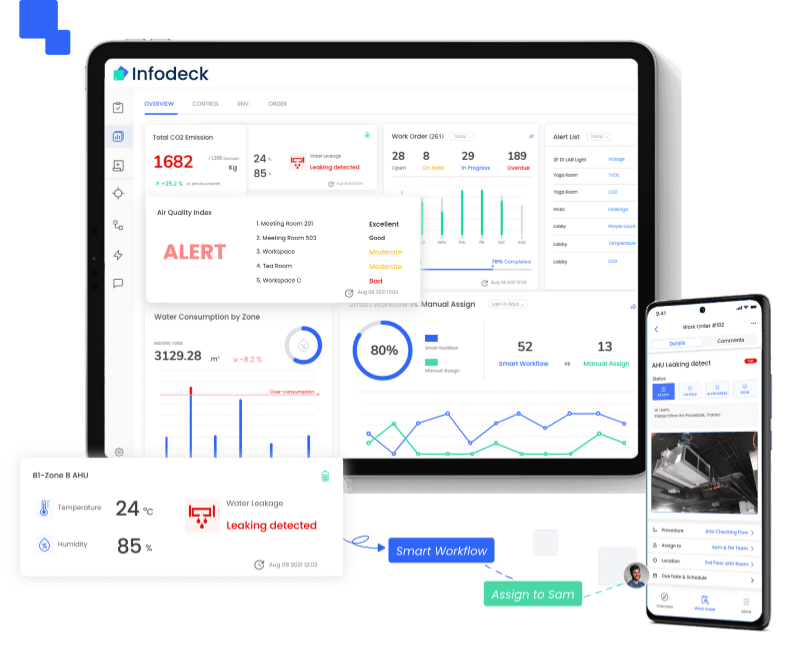
How Infodeck.io can help you for the IoT Smart Building implementation
Congratulations! You've now gained a comprehensive understanding of smart buildings and the significant role that IoT plays in their management. But how do you go about implementing these concepts in your own building? That's where Infodeck.io comes in. Our cutting-edge platform is specifically designed to simplify and streamline the process of integrating IoT into your smart building.
With Infodeck.io, you'll have access to a wide range of tools and features that will enable you to optimise energy efficiency, enhance occupant comfort, and improve overall building management. Our user-friendly interface makes it easy for you to monitor and control various systems remotely, ensuring that your building operates at its peak performance while minimising costs.
Don't miss out on the opportunity to transform your building into a state-of-the-art smart facility. Visit our website today and discover how Infodeck.io can revolutionise your IoT smart building implementation!
FAQs
What are the key benefits of implementing IoT in smart buildings?
Integrating IoT into smart buildings offers numerous benefits, including improved energy efficiency, enhanced occupant comfort, streamlined facility management, predictive maintenance capabilities, and increased sustainability. By harnessing the power of IoT technologies, you can significantly reduce operational costs while creating a more comfortable and sustainable environment for occupants.
Is it expensive to implement IoT in a smart building?
The cost of implementing IoT in a smart building can vary depending on factors such as the size of the building, the complexity of systems being integrated, and specific requirements. However, it's important to note that while there may be upfront costs associated with installation and setup, the long-term benefits far outweigh these initial expenses. The energy savings achieved through optimised operations and maintenance can lead to substantial cost reductions over time.
Can existing buildings be retrofitted with IoT technology?
Absolutely! Retrofitting existing buildings with IoT technology is entirely possible and can be a cost-effective solution for upgrading your facility. By integrating IoT sensors, devices, and management systems into your existing infrastructure, you can unlock the benefits of smart building technology without the need for extensive renovations or construction.
How secure is IoT technology in smart buildings?
Security is a top priority. Infodeck.io employs state-of-the-art security measures to protect your data and ensure the integrity of your building's systems. Our platform utilises encryption, authentication protocols, and regular security updates to safeguard against potential threats.

.png)
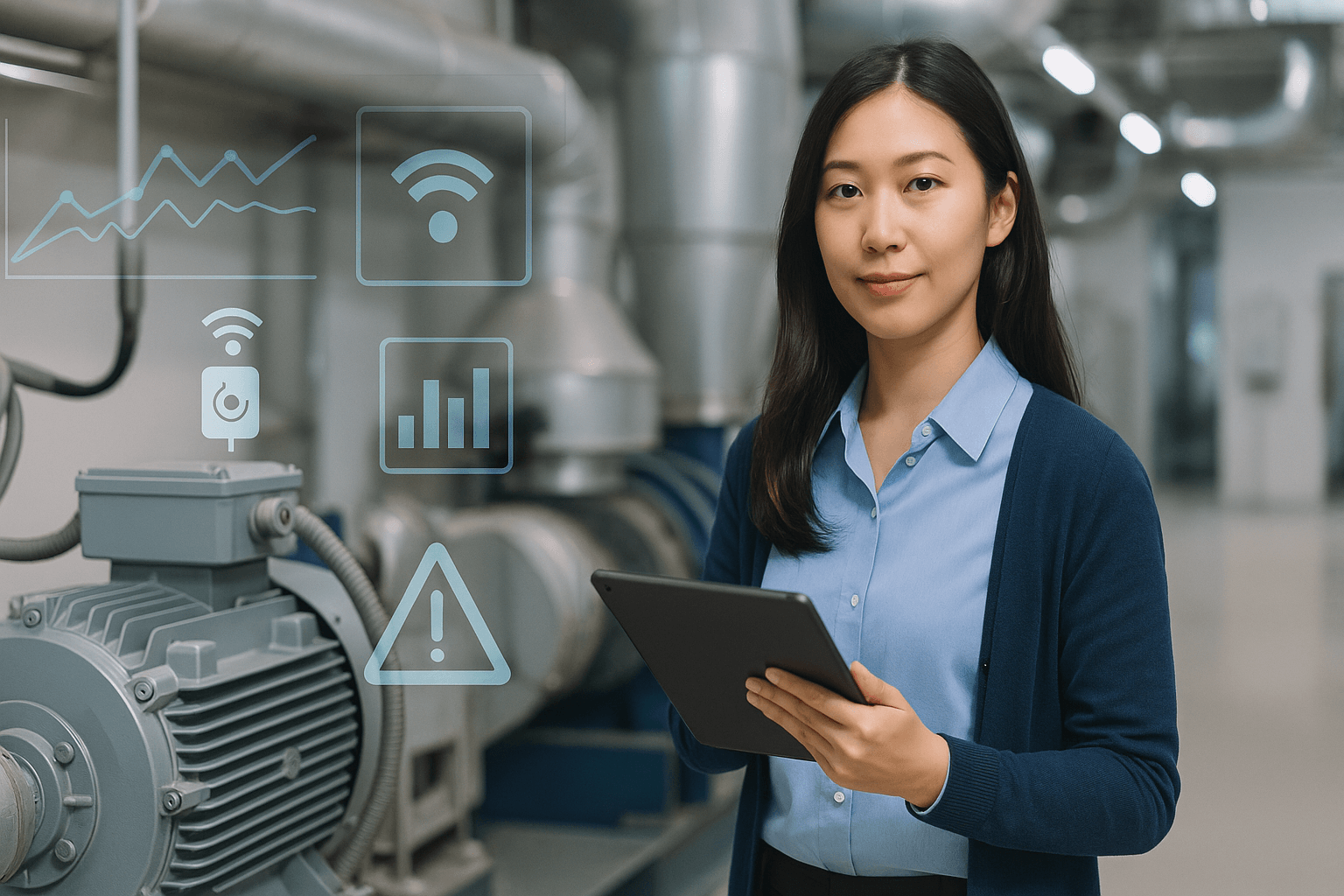



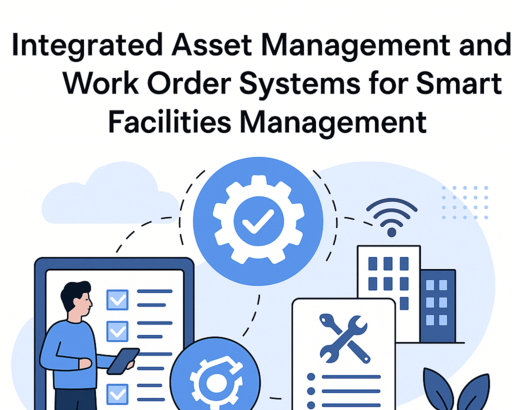
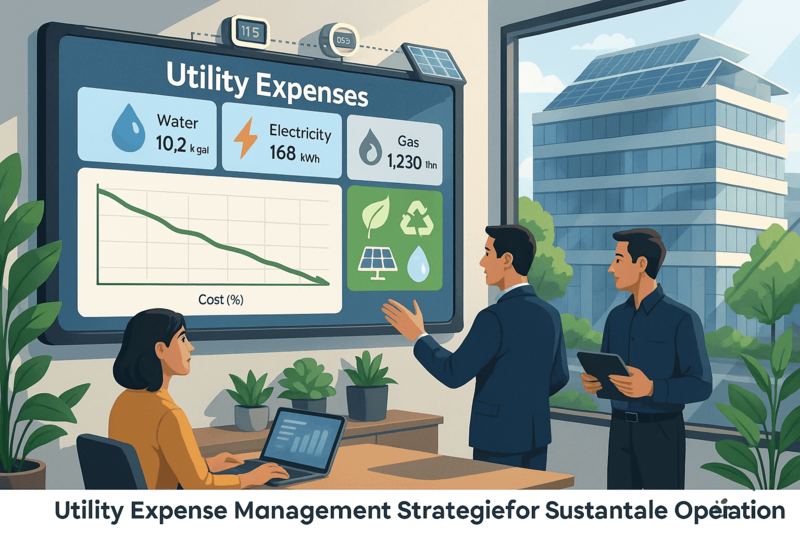



.png)




.png)
















.jpeg)








